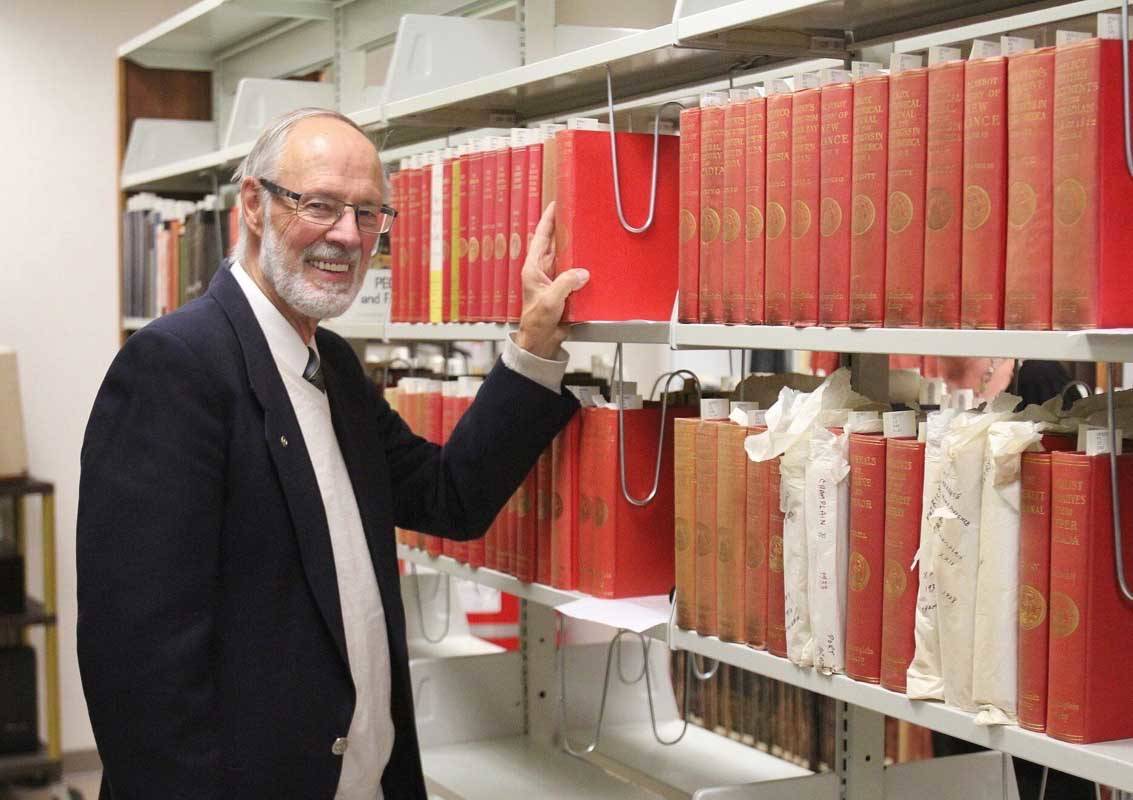A Red Deer family recently made a very special donation of treasured volumes to the University of Lethbridge – with a specific personal connection to the institution.
“It was amazing how it came together,” explained Dr. Bob Lampard, who donated more than 6,700 volumes from his own private collection.
They are now housed in the Dr. Dorothy Lampard Reading Room at the University of Lethbridge – particularly meaningful as she (Bob’s aunt) had joined the newly-formed University 50 years ago as a founding faculty member and senator.
Dorothy passed away in 1994.
Recently, the Lampard family enjoyed a dedication of the Dr. Dorothy Lampard Reading Room, and it was an extraordinary and very meaningful event.
“It was a very well-organized and well attended event – all the senior people of the University were there which was beyond my expectations,” he noted. “What I realized when I saw the gathering, was that it was also an important event for them, too. And as the program went along, and I listened to each of the stories, it became even more apparent.
“In terms of their own 50th anniversary this year, it was also their last major event,” he said, adding that ultimately the entire event just couldn’t have worked out any better in terms of timing, personal meaning and how appreciated the university is to receive the extensive and incredible collection.
Bob’s collection includes a complete series of the Champlain Historical Society publications, many volumes of the Hudson’s Bay Record Society and many seminal primary narratives of the exploration of the Canadian Arctic.
“The other part of it that really struck me is that I was so pleased and honoured to donate what I hadn’t realized would be so significant and important to the university,” he said.
Donations like that indeed make for a welcome addition, and of course can be an invaluable source of research information and history quite like no other.
“I’d be hard-pressed to put this collection together again. It’s a generation since I started it, and books are more scarce,” he added.
Dorothy started her career as a one-room school teacher in the 1930s.
After training in Winnipeg, Chicago and Birmingham, she became recognized as an expert in remedial education with a lifelong focus on reading problems, according to a information provided by the University of Lethbridge.
“After completing 51 years of teaching excellence and 36 years in her reading sub-specialty with numerous publications, guide books, curriculum changes and courses to her credit, she returned to Edmonton and was honoured with the Queen’s Jubilee Award and the Alberta Award of Excellence.”
Bob said his aunt had also, over the years, set up five different reading clinics. “She was a very natural interpreter of reading difficulties and what to do with them. She was an amazing diagnostician.”
She would also pass on her knowledge to teachers to help them identify and correct reading difficulties as well.
“She was so good at it – so quick, so natural and so insightful,” recalled Bob, adding that her approach was largely about how can we improve people’s reading skills so that they can learn and think in better, more productive ways.
“That became her focus in life.”
Clearly, her nephew developed a similar passion for learning, reading and finding out about all kinds of interesting topics that surfaced over the years. Bob’s collection grew to such an extent that a friend once remarked, ‘No library should be without a home like this’.
Back in 1992 he was starting to wonder what to do with the massive array of books.
Ultimately, the University of Lethbridge proved the ideal place to connect with.
Having the donation made during not just the University’s 50th anniversary but also the 50th anniversary of Dorothy joining the staff there made the entire event that much more of a celebration.
As Bob noted, “The first books ever written on western Canada are the 1749 and 1858 British Parliament HBC investigations. They are there. So is an original copy of the 1860-65 Palliser Papers, and 131 Champlain Society volumes. They are the best set in Alberta and the only one that is crested, singly numbered, and mint.
“I’m excited about the future research possibilities for the collection.”



